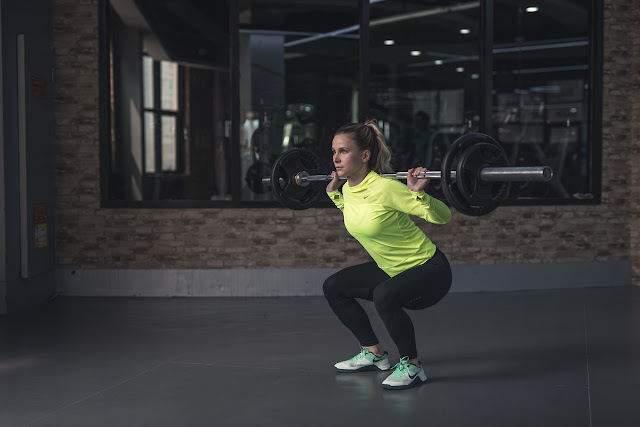Stop wasting time in the gym doing workouts like shrugs, leg stretches, leg raises, bicep curls, tricep presses, and other exercises that ...
Stop wasting time in the gym doing workouts like shrugs, leg stretches, leg raises, bicep curls, tricep presses, and other exercises that are virtually pointless. Instead of concentrating on isolating a single muscle group, if you really want a rock-hard functional body, concentrate on exercises that promote full-body improvements.
The Front Squat: As you might have guessed, the squat is one of the most powerful overall exercises for promoting body structure improvements (along with deadlifts) (muscle gain and fat loss).
Squats and deadlifts, for example, use more muscle
groups under a heavy load than almost any other weight-bearing movement known
to man. As a result, these exercises produce the most hormonal responses
(growth hormone, testosterone, and so on) of any workout.
Even though no upper body specific joint movements are performed during the squat, university research studies have shown that including squats in a training program improves upper body development in addition to lower body development.
The simple squat and deadlift (and their variations) are the perfect cure for gaining muscle mass, losing body fat, creating a solid and
functional body, and enhancing athletic performance.
Squats can be performed with a variety of free-weighted objects, like barbells, dumbbells, kettlebells, sandbags, and even just your own body weight. Squats can only be performed with free weights, not Smith machines or other squat machines! Machines prevent the body from moving in normal, biomechanically correct ways.
You also do less work because the computer takes care of balancing your weight.
As a result, you get worse results! The barbell back squat, in which the bar
rests on the trapezius muscles of the upper back, is the most common form of
squat.
Many specialist strength guides agree that front squats and overhead squats (where the bar rest on the shoulders in front of the head) are more functional to athletic success than back squats where there is a smaller risk of damage to the back.
I believe that a combination of three would have the best results for
overall muscles, loss of body fat, and athletic success (not necessaries over
the same period of work). Front squats are slightly harder than rear squats,
and overhead squats are significantly harder than rear squats and front squats.
You will
take a few sessions to get familiar with the front squats if you are used to
doing the back squats only, so start lighting out. You can begin to feel the
rhythm and increase the pounding after a few training sessions.
For front
paddles: The forehead paddle is more stable than the back paddles, which
enhances the abdominal role. It is usually a lower body workout but is great to
have core strength and flexibility functionally in the movement of the
squatting. You should also learn how to rest the bar correctly on your
shoulders.
The bar on the front of the shoulders can be rested in two ways. In the first approach, you move underneath the lock and cross your forearms in the X position while resting the lock on the dimple, which is made by the shoulder muscle close to the bone.
Then press your thumb-side onto the bar to support it. You keep the
bar in place. You may also hold the bar by putting your hands upside-down on
your shoulders and the bar resting on your fingertips.
Your elbows must remain high with for methods in order to avoid weight drop. The upper arms of the squat should be parallel to the ground. See which type of bar support is easier for you.
Then start your squat by sitting back and down, maintaining the
weight of your heels in contrast to your feet' balls. Place your thighs around
parallel to the ground and then press back to the starting position.
Keeping your weight closer to your skins is the secret to protecting your knees from injury and developing solid knee joints that are harmful to injury. Remember that properly done squats actually strengthen the knees; improperly done squats will damage the knees.
Use an unweighted bar first or relatively lightweight
to practice the movement. Most people are shocked at how hard it works when you
practice the right way. This is because of the higher uprightness than back
squats.








No comments